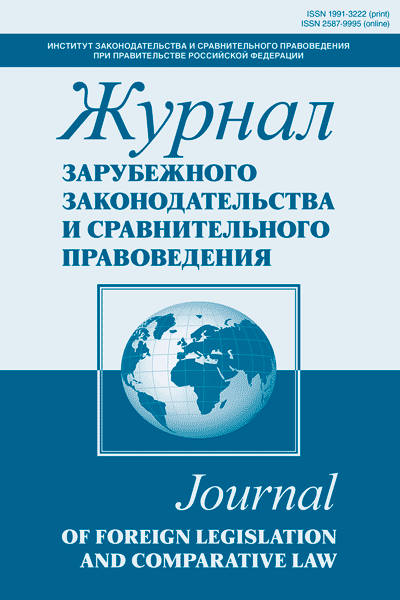The classification of business entities into public and non-public in the Russian law provides a reason to seek from the world experience in order to highlight the similarities and further development of regulatory pathways of the above-noted institute. The goal set is achieved by comparing the attributes of a public company in the legislation of some countries. In particular, on the example of the UK and the USA it is established the difference between public and private companies. There is marked a combination of two trends: imperative regulation of public companies, along with the freedom of the creation and operation of private companies. The article describes the approach to the definition of the status of a public company, adopted in Eastern Europe, which is different from that in the UK, studies law in certain countries strongly influenced by English law. Along with the detailed characteristics of the Russian model of public (non-public) companies its difference from the typical Anglo-Saxon model is revealed. The presence (absence) of division into public (private) companies does not evidence the proper and (or) inadequate level of a legal system in this aspect, but simply reflects the model of regulation of the market in a particular country. The authors criticize different interpretation of the term “publicity” by legislators in the case of public (non-public) companies.
сomparative corporate law, public and private companies, mandatory regulation, optionality, market regulation models.
1. Andenas M., Wooldridge F. European Comparative Company Law. Cambridge, 2009.
2. Davies P. L., Worthington S. Gower & Davies’ Principles of Modern Company Law. 9th ed. L., 2012.
3. French D., Mayson S., Ryan Ch. Company Law Oxford University Press. 2010-2011. 27th ed.
4. Hannigan B. Company Law. 4th ed. Oxford, 2014.
5. Karjala D. S. An Analysis of Close Corporation Legislation in the United States. URL: homepages law.asu.edu>AzStLjFall1989.
6. Kevin Tan. The Singapore Legal System. 2nd ed. Singapore, 1999.
7. Kleinberger D. S. Why Not Good Faith? The Foibles of Fairness in the Law of Close Corporation. Willaim Mitchell Law Review. 1990. Vol. 16.
8. Mikkelson T. S. When Duty Calls: Should the Duty of Majority to Minority Shareholders in Closely Held Corporations Change as a Result of the New Revised Uniform Partnership Act. Mississippi College Law Review. 2005-2006. Vol. 25.
9. O’Neal H. F. Close Corporation Legislation: A Survey And An Evaluation. Duke Law Journal. 1972.
10. Pernazza F. Corporations and Partnerships in Italy. Kluwer Law International. 2nd ed. 2012.
11. Ribstein L. E. The Emergence of the Limited Liability Company. The Business Lawyer. 1996. Vol. 51.
12. Thompson R. B. The Shareholder’s Cause of Action for Oppression. The Business Lawyer. 1993. Vol. 48.
13. Avilov G. E. Izbrannoe / sost. O. Yu. Shilokhvost; otv. red. N. G. Doronina. M., 2012.
14. Gabov A. V. Korporativnoe zakonodatel´stvo v 2014-2015 godakh: sostoyanie, dostizheniya, problemy, osnovnye diskussii i perspektivy razvitiya. Natsional´nyy doklad po korporativnomu upravleniyu. Vyp. VIII. M., 2015.
15. Gavrilyuk O. V., Gaydaenko Sher N. I., Grachev D. O. i dr. Yuridicheskie litsa v grazhdanskom prave zarubezhnykh stran: monografiya / otv. red. N. G. Semilyutina. M., 2015.
16. Kontseptsiya razvitiya korporativnogo zakonodatel´stva na period do 2008 goda. Zakon. 2006. № 9.
17. Sukhanov E. A. Amerikanskie korporatsii v rossiyskom prave (o novoy redaktsii gl. 4 GK RF). Dostup iz SPS «Konsul´tantPlyus».
18. Fleyshits E. A. Vstupitel´naya stat´ya. Charl´zvort Dzh. Osnovy zakonodatel´stva o kompaniyakh / per. s angl. R. O. Khalfinoy. M., 1958.





